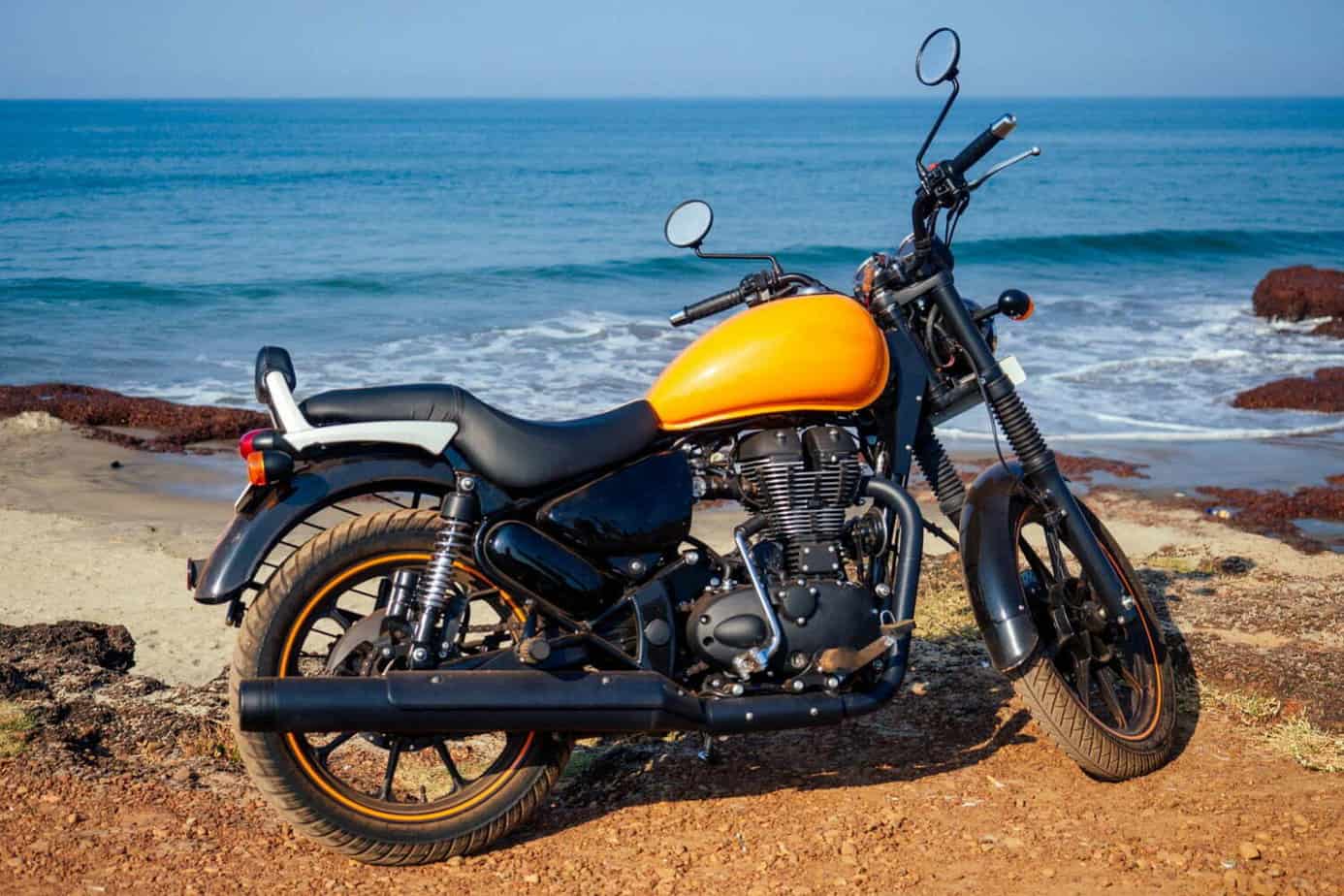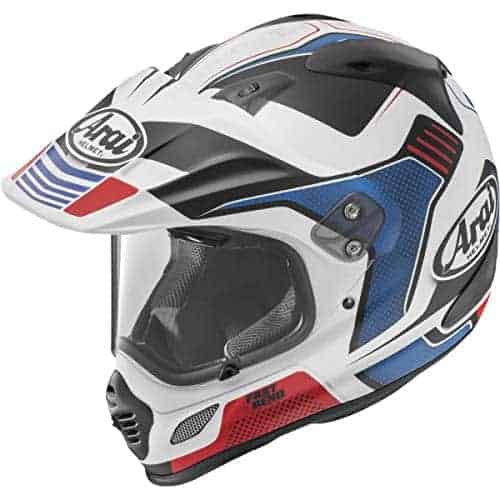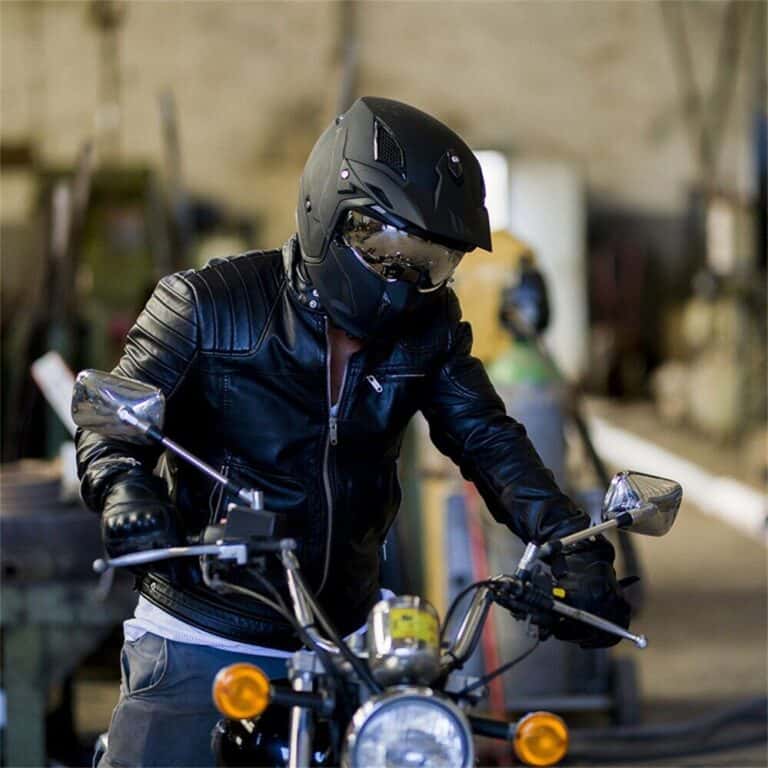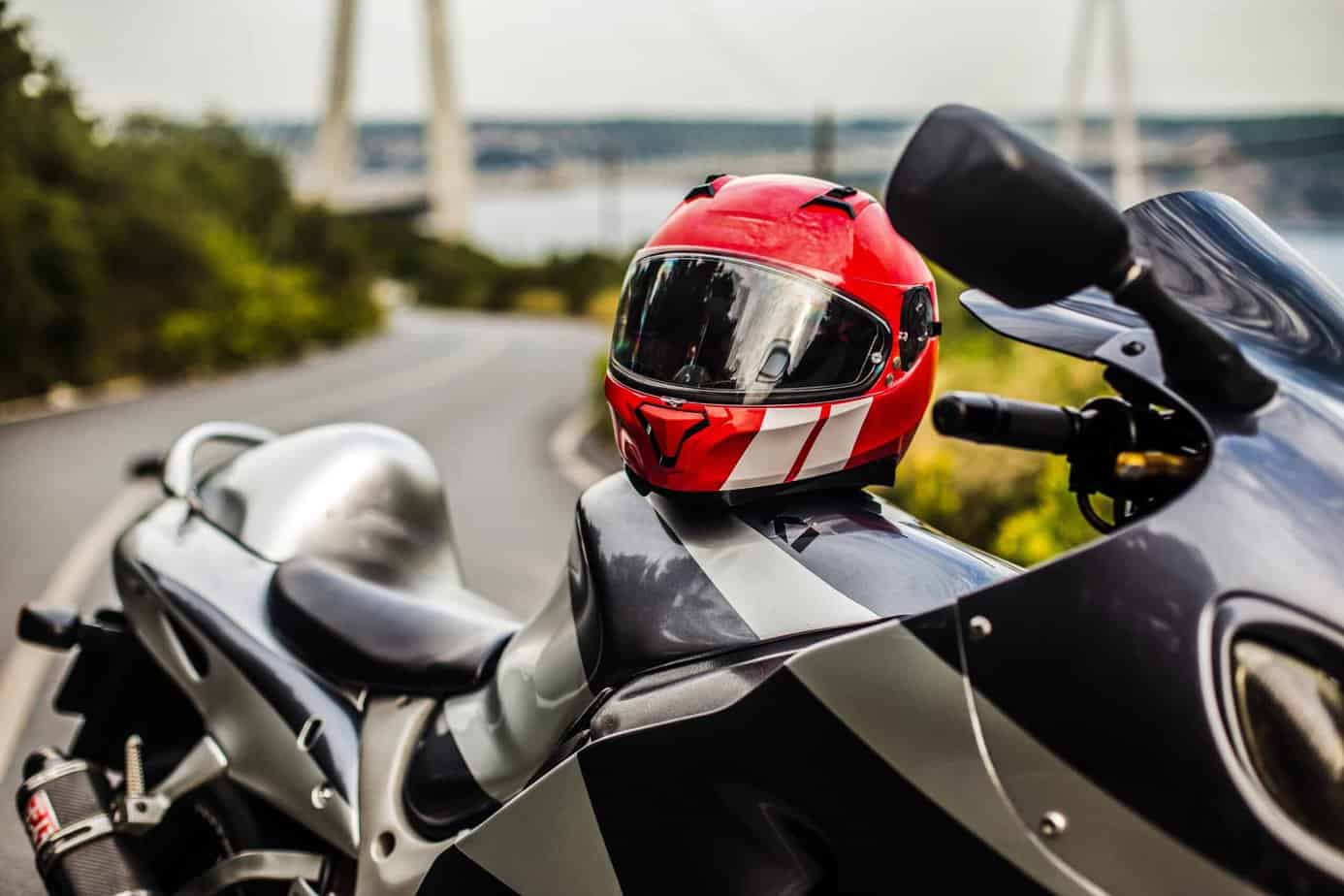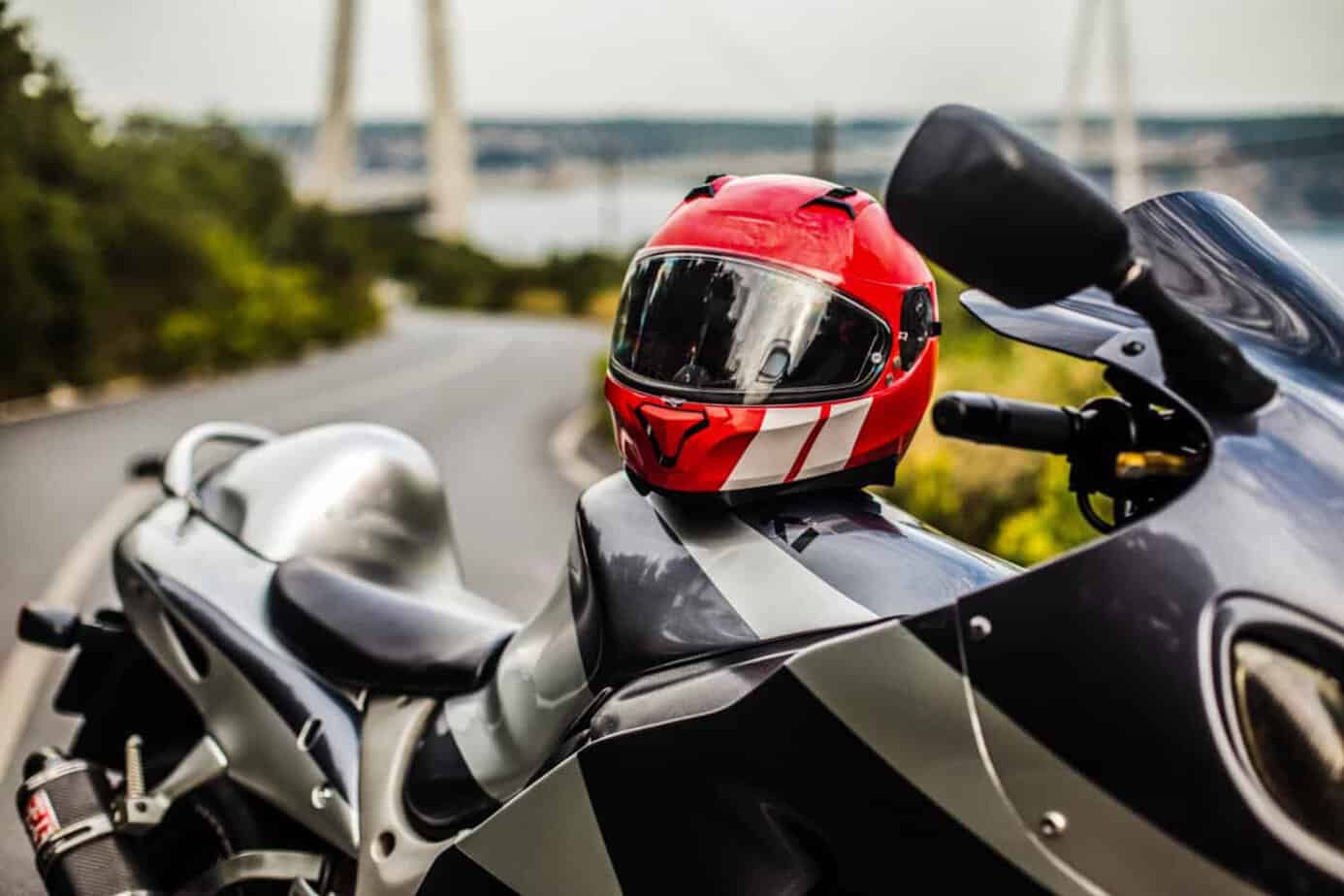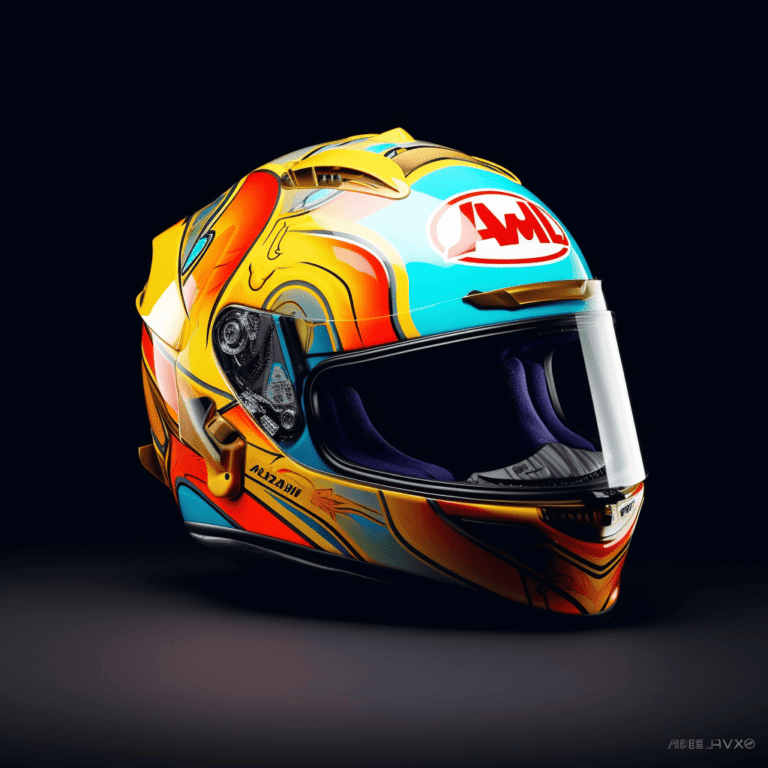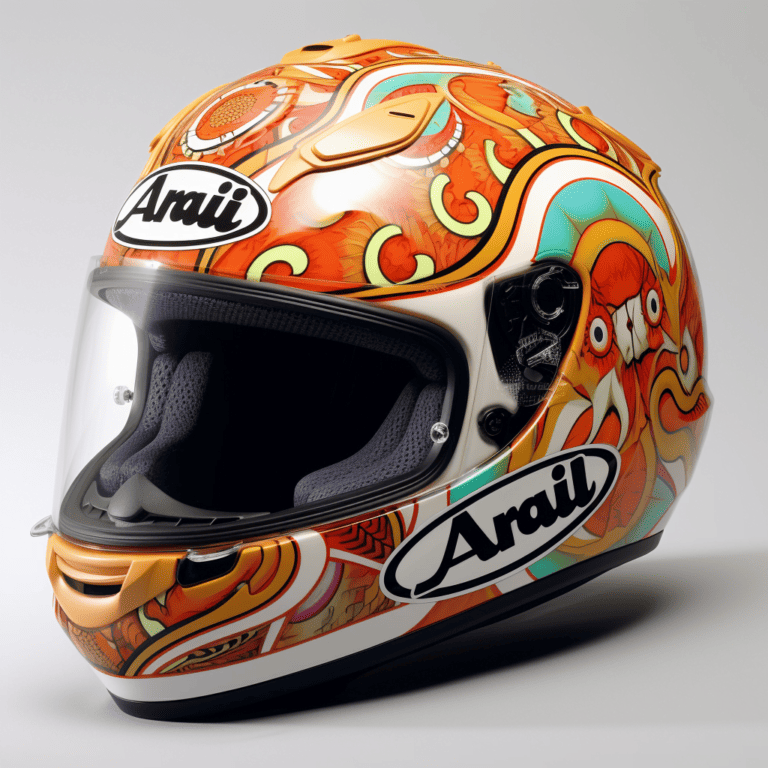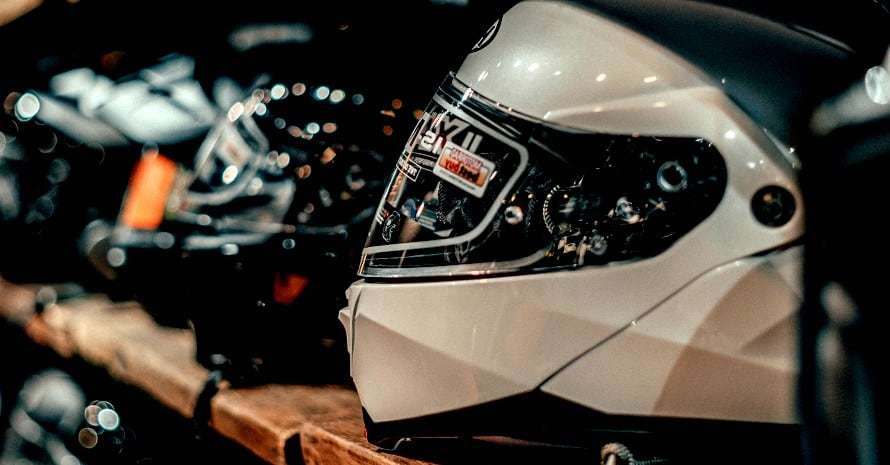Whether motorcycle riders are wearing proper gear has been an ongoing topic that seems never to end.
But what happens if you are caught in a pinch? Maybe somebody stole your motorcycle helmet. Or maybe you have lost or forgotten it somewhere and now only have access to a regular bicycle helmet. Do you just put on your bicycle helmet and get on your motorcycle?
Can you wear a bicycle helmet on a motorcycle? A motorcycle rider should not wear a bicycle helmet on a motorcycle. A rider can wear a bicycle helmet on a motorcycle, however, it cannot provide the same levels of safety and protection as a motorcycle helmet can. Riding a motorcycle with a bicycle helmet can be illegal in many places.
Table of Contents
Below I will go in more detail about what differentiates bicycle helmets and motorcycle helmets. I will review them up close and go over some important caveats and considerations. Let’s take a look.
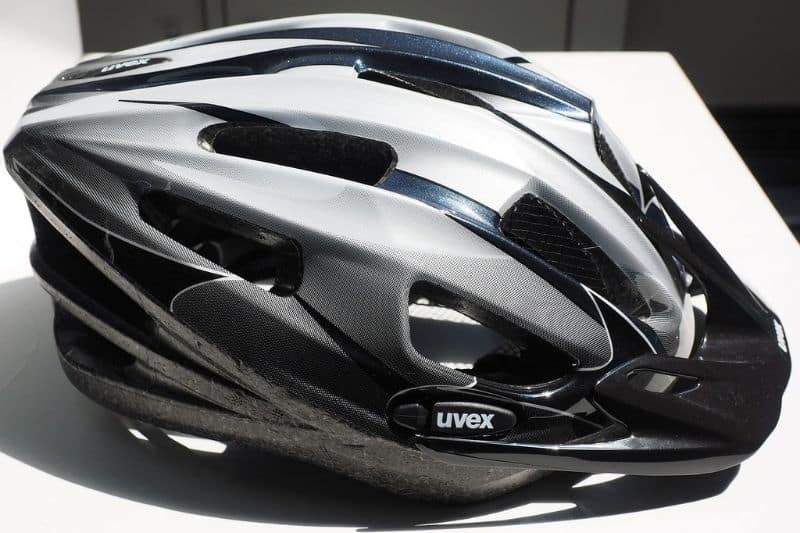
Bicycle helmet vs. motorcycle helmet
Both motorcycle and bicycle helmets are designed to protect the head of the rider from impact injuries.
However, let’s take a detailed look at each type of helmet and see how they compare.
Motorcycle helmets
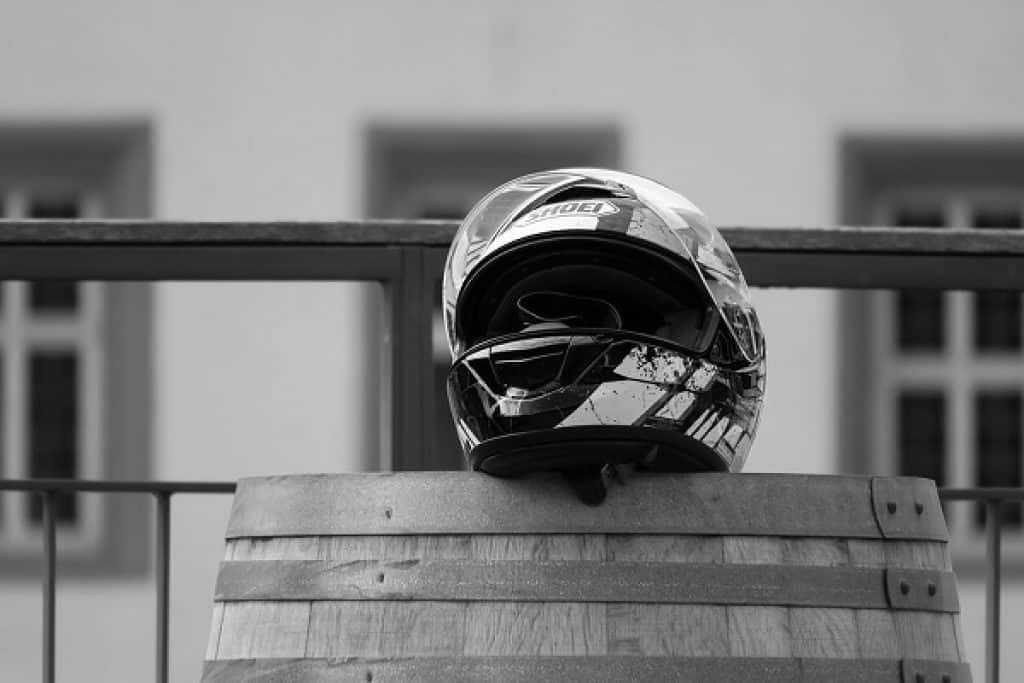
Motorcycle helmets are usually more durable and heavy-duty. They are intended for the protection of the head in the case of a motorcycle accident.
As a direct result, motorcycle helmets undergo some rigorous testing.
The way those tests are carried out will vary from country to country. Generally speaking, there are two major motorcycle helmet standards:
- DOT: This is the standard that is determined by the U.S. Department of Transportation. The standard that is in effect currently is the FMVSS 218, and motorcycle helmets used in the U.S. should meet it.
- ECE: This is the standard that is determined by the Economic Commission for Europe and is used by more than 50 countries. The current ECE standard is ECE 22.05.
With that being said, there are also two more motorcycle helmet standards that you can stumble upon.
- FIM: This is currently in effect and applies to all FIM Endurance World Championship, and Endurance World Cup races and track uses.
- Snell: Snell testing is similar to DOT testing; however, it is more rigorous. Unlike DOT, ECE, or FIM, Snell testing and certification is voluntary.
For example, for a motorcycle helmet to be DOT-approved, it has to pass a few different tests.
Motorcycle helmets are subjected to different temperatures, humidity levels, and even water immersion, and then they are dropped from a preset height onto an asphalt or a curb-like edge anvil.
The height from which the motorcycle helmets are dropped can vary from 6.56 up to 9.84 feet (2 to 3 meters) or more. This means that the motorcycle helmet will be moving at 14 to 17 mph (or more) at impact.
During the penetration test, a sharp striker is dropped onto the helmet from a preset height. The helmet should prevent the striker from reaching the headform.
The motorcycle helmet’s retention straps are also tested. The retention straps are placed under a load that starts at 49.9 lbs and reaches 299.2 lbs (22.7 up to 136 kg) for a set period of time.
And lastly, motorcycle helmets should not limit the peripheral vision of the user.
Of course, these are some general ballpark numbers, and they can—and most likely will—change over time.
Types of motorcycle helmets
There are several different types of motorcycle helmets—six to be precise—and each one of them will provide varying levels of protection.
- Full-face helmets
- Open-face (3/4) helmets
- Half helmets
- Modular or flip-up helmets
- Off-road, dirt bike, or motocross helmets
- Enduro, hybrid, or adventure helmets
The best level of protection is usually offered by the full-face, the modular, the off-road, and the enduro motorcycle helmets. The open-face and the half helmets will, generally speaking, provide less protection simply because of their more open design.
Bicycle helmets

Bicycle helmets are designed with a few key points in mind. Those aspects of a bicycle helmet contribute to its advantages and disadvantages. A bicycle helmet should provide impact protection and at the same time, provide cooling and airflow and remain relatively lightweight.
Although bicycle helmets are designed to provide impact management and protection, their limits can be exceeded, thus leading to a higher risk of injury.
Bicycle helmets also need to meet certain safety standards. All bicycle helmets created after 1999 are required to meet the U.S. Consumer Product Safety Commission (CPSC) 16 C.F.R. part 1203 safety standard for bicycle helmets.
Much like motorcycle helmets, bicycle helmets will, too, have a label indicating that they have passed that standard.
A few aspects of a bicycle helmet will be tested like, but not limited to, the impact resistance, the protective capabilities, and the chin straps, as well.
For example, the bicycle helmet is strapped onto a headform that has a built-in accelerometer in it. The helmet is then dropped from a height of 6.56 feet (or 2 meters) onto a flat anvil. This means that the helmet will be traveling at 14 mph at the moment of impact.
Bicycle helmets may also be tested with a drop from 3.93 feet (or 1.2 meters) onto a rounded anvil and a hazard or curbstone-like anvil. The helmet will be traveling at 11 mph at impact; however, the different shapes of the anvils will place a lot more pressure on the helmet.
Types of bicycle helmets
There are a few different types of bicycle helmets that we can stumble upon. They are:
- Road and commuter helmets.
- Trail helmets.
- Enduro helmets.
In a similar manner, the different bicycle helmets will offer different levels of protection and typically cover just the top of your head.
For example, the road and commuter helmets will offer very little protection. Trail helmets are a little better, and enduro helmets will usually offer the best protection (as they are also full-face helmets).
Motorcycle vs. bicycle helmets impact protection
It is my belief that a few things should be mentioned again.
A helmet cannot protect the rider in every circumstance imaginable. The impact resistance of helmets is tested at speeds between, in most cases, 11 to 20 mph.
Both motorcyclists and cyclists can move at higher speeds than that. But the reason why experts chose those numbers is that they represent the highest percentile and thus aim to prevent severe head injury to as many people as possible.
However, that being said, collisions with other motor vehicle has been proven to be the most severe, and usually the type of crashes that are responsible for fatalities and serious injuries in both motorcyclists and cyclists alike.
So, a helmet, no matter how good it is, certainly does have its limitations.
The capabilities of a helmet are also limited by its inherent design. You can do only so much with a small object like a helmet.
During the aforementioned drop or impact tests, the peak acceleration or “g” is measured. The “g” is believed to be the most important factor in determining the outcome form a crash. The lower the number—the less the potential hazard to your health is.
Sources indicate that forces below 50 g are safe, between 50 to 100 g can result in a minor injury. Acceleration of 200 g has been associated with an 80% chance of a serious head injury, and above 250 g in critical and even fatal injuries.
It is believed that forces around 95 g’s will result in a concussion.
The technology used for the manufacturing of motorcycle helmets has greatly improved over the years. As a result, we can see a significant improvement in the impact management of motorcycle helmets today. (Up to 28%.)
One extensive study tested multiple motorcycle helmets, dropping them from 9.8 feet and 6.6 feet onто a flat asphalt anvil and on a curb-like edge. The helmets managed to keep the acceleration between 129 g and 243 g.
And another, much smaller, study on different helmets had s similar findings and also concluded that bicycle helmets offered the least amount of impact protection.
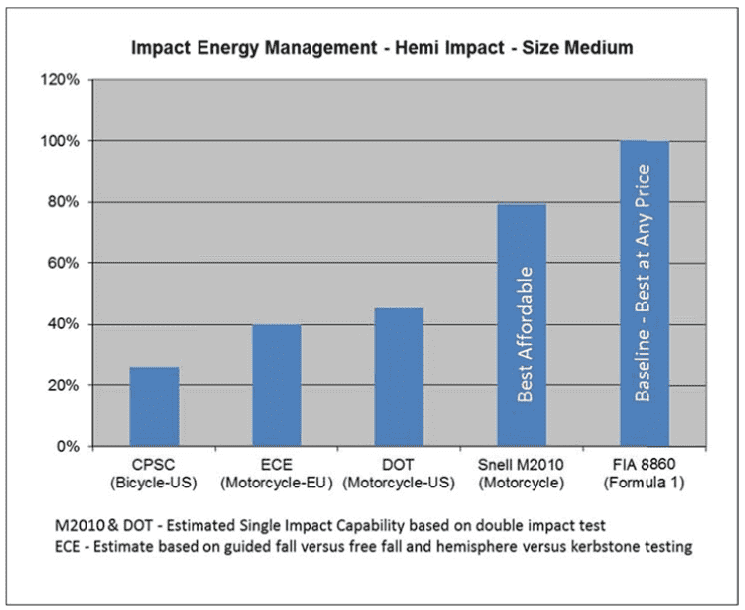
Motorcycle helmets are also significantly heavier than bicycle helmets. The weight of the helmet has been shown in some studies to correlate with its protective capabilities.
It is also worth noting that despite the extensive research and testing, experts have not reached a consensus in the best way to test helmets to account for all relevant outcomes.
What kind of a helmet should you wear on a motorcycle?
There should be no two opinions on this topic. You should wear the right gear for the right application. A bicycle helmet is designed for cyclists and not motorcyclists.
A bicycle helmet will provide significantly less protection in the case of a motorcycle accident. In contrast, a motorcycle helmet will give the rider the best odds of surviving and will just offer better levels of protection.
So much so that a motorcycle helmet can do a better job at protecting cyclists than bicycle helmets can. (However, cyclists do not wear motorcycle helmets because they are warmer, heavier, more expensive, less comfortable, and bulkier.)
Too often, riders will underestimate the level of protection their helmets can provide.
Is it legal to wear a bicycle helmet on a motorcycle?
Motorcycle helmets need to pass a few different tests in order to be legally approved. They undergo an impact test, a penetration test, and usually a strap retention test. They are also tested for impact resistance from the front and the sides.
For a motorcycle helmet to be deemed legal for use, it needs to pass the mandatory standards that are accepted in the area where you are riding the motorcycle. For example, A DOT helmet may not be legal for use in Europe, and an ECE-approved helmet may not be legal in the U.S.
Motorcycle helmets may have passed just one or several safety standards. A motorcycle helmet that has passed a particular standard is labeled with a corresponding sticker, usually placed at the back of the helmet.
If a helmet does not have those labels, it means that this is not a motorcycle helmet, and it is not legal to use as such. Bicycle helmets will usually not be able to pass the standards for a motorcycle helmet and thus will most likely not be legal to use as a motorcycle helmet.
As a result, depending on the laws and regulations where you live, a police officer can stop you, fine you, and prevent you from riding your motorcycle until purchasing and using a proper motorcycle helmet.
However, some places will not have any laws requiring motorcycle riders to wear helmets. Since nothing requires you to wear a helmet, quite possibly, nothing is telling what helmet you can wear, as well. If you choose to wear one, that is. In this case, legally, it should not be considered illegal to wear a bicycle helmet on a motorcycle.
Can you wear a bicycle helmet as a passenger on a motorcycle?
Both the rider and the passenger cannot ride a motorcycle using a bicycle helmet for head protection. Both the rider and the passenger should have appropriate motorcycle helmets that have passed the minimum safety requirements for a motorcycle helmet.
In the case of an accident, both the rider and the passenger will be in danger. Thus the requirements for wearing a proper motorcycle helmet apply to both the rider and the passenger.
Should you wear a bicycle helmet on a motorcycle?
Nothing is going to physically stop you from wearing a bicycle helmet.
However, should you do it?
The simple question is no. You shouldn’t.
Motorcycle riders are at a higher risk of not only sustaining injuries but also sustaining more severe and even fatal injuries in the case of an accident. And one of the leading causes of death in a motorcycle crash is a head injury. (See article: If you ride a motorcycle, will you eventually crash?)
The main purpose of helmets is to aid in reducing the acceleration generated by your head as it hits an object. This acceleration can be particularly high, and the aftermath can be very severe with motorcycle riders simply because they will be most likely moving at higher speeds than a cyclist.
Even the best motorcycle helmet cannot provide protection against everything.
However, the motorcycle helmet tries to give you the best odds of surviving. There is a lot of evidence that the fatalities reduced drastically in areas where mandatory motorcycle helmet laws were enacted.
FAQ’s
- Can you wear a bicycle helmet on a motorcycle?
- While you technically can wear a bicycle helmet on a motorcycle, it’s not recommended. Bicycle helmets are not designed to provide the same level of safety and protection as motorcycle helmets. Additionally, wearing a bicycle helmet on a motorcycle might be illegal in many places.
- What kind of helmet should you wear on a motorcycle?
- You should wear a proper motorcycle helmet while riding a motorcycle. Motorcycle helmets are designed and tested to provide the necessary protection in case of accidents, with specific standards like DOT or ECE certifications. Bicycle helmets are not suitable substitutes for motorcycle helmets due to differences in design and safety standards.
- Is it legal to wear a bicycle helmet on a motorcycle?
- The legality of wearing a bicycle helmet on a motorcycle varies depending on your location. In many places, it’s required to wear a helmet that meets motorcycle safety standards while riding a motorcycle. Wearing a bicycle helmet on a motorcycle could lead to legal consequences and might not provide adequate protection in case of an accident.

Meet Simon, the 46-year-old aficionado behind YourMotoBro. With a lifelong passion ignited by motocross dreams and a Canadian Tire bicycle, Simon’s journey has been nothing short of extraordinary. From coaching underwater hockey to mastering muddy terrains, he’s an authority in thrill and adventure. Certified as an Off-Road Vehicle Excursion Guide and trained in Wilderness First Aid, Simon’s love for bikes is as diverse as his collection—from a robust BMW GSA R1200 to the memories of a Harley Davidson Night Train. By day a respected telephony consultant, by night a motorcycle maestro, Simon’s tales are a blend of expertise, resilience, and undying passion. ?️✨
